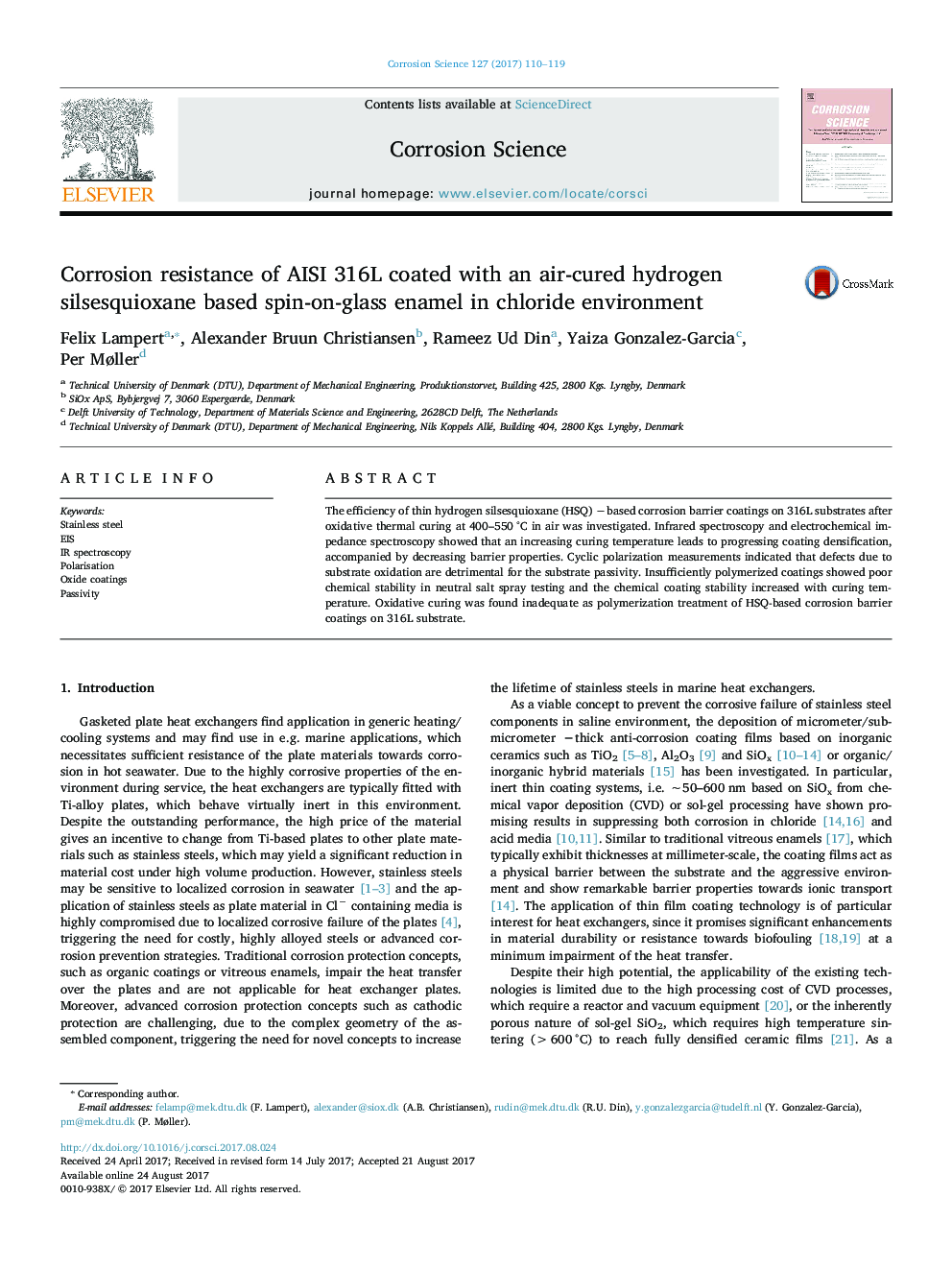| Article ID | Journal | Published Year | Pages | File Type |
|---|---|---|---|---|
| 5439811 | Corrosion Science | 2017 | 10 Pages |
Abstract
The efficiency of thin hydrogen silsesquioxane (HSQ) âbased corrosion barrier coatings on 316L substrates after oxidative thermal curing at 400-550 °C in air was investigated. Infrared spectroscopy and electrochemical impedance spectroscopy showed that an increasing curing temperature leads to progressing coating densification, accompanied by decreasing barrier properties. Cyclic polarization measurements indicated that defects due to substrate oxidation are detrimental for the substrate passivity. Insufficiently polymerized coatings showed poor chemical stability in neutral salt spray testing and the chemical coating stability increased with curing temperature. Oxidative curing was found inadequate as polymerization treatment of HSQ-based corrosion barrier coatings on 316L substrate.
Related Topics
Physical Sciences and Engineering
Materials Science
Ceramics and Composites
Authors
Felix Lampert, Alexander Bruun Christiansen, Rameez Ud Din, Yaiza Gonzalez-Garcia, Per Møller,
